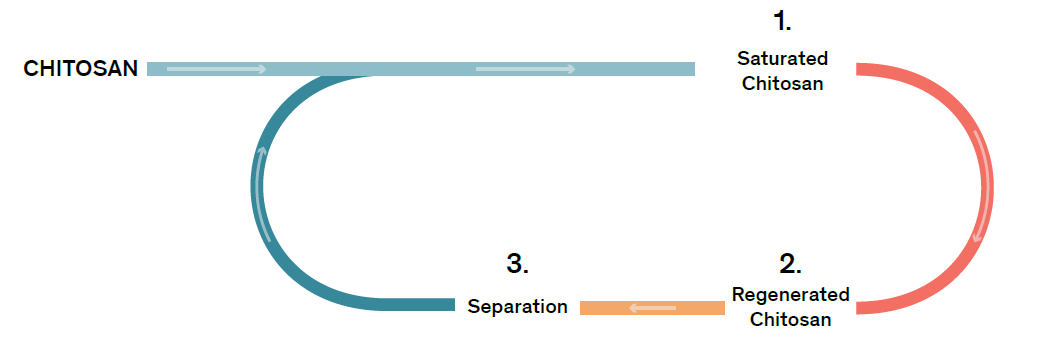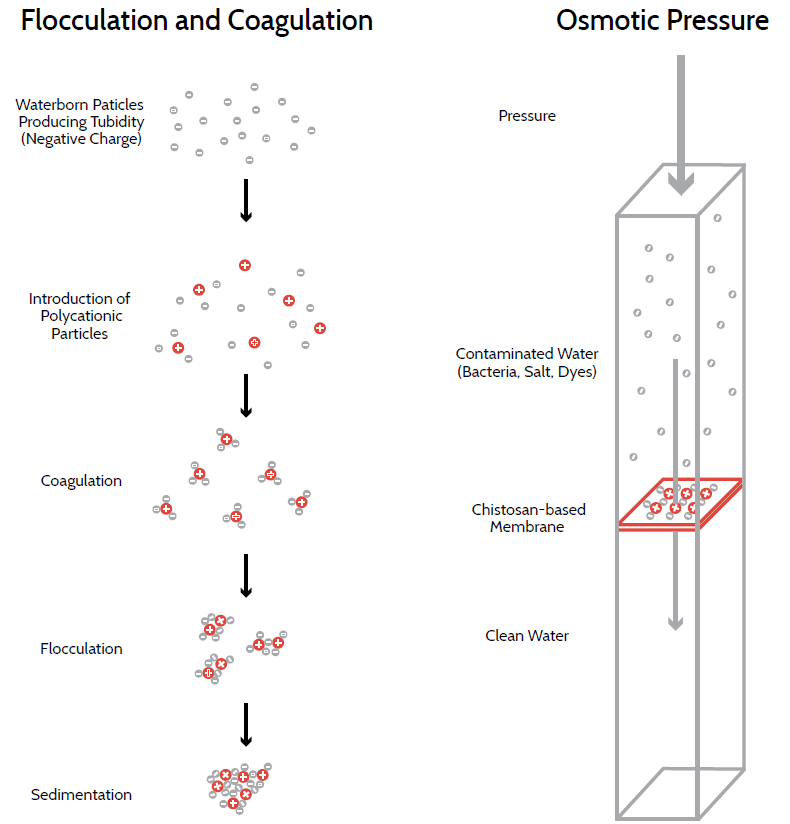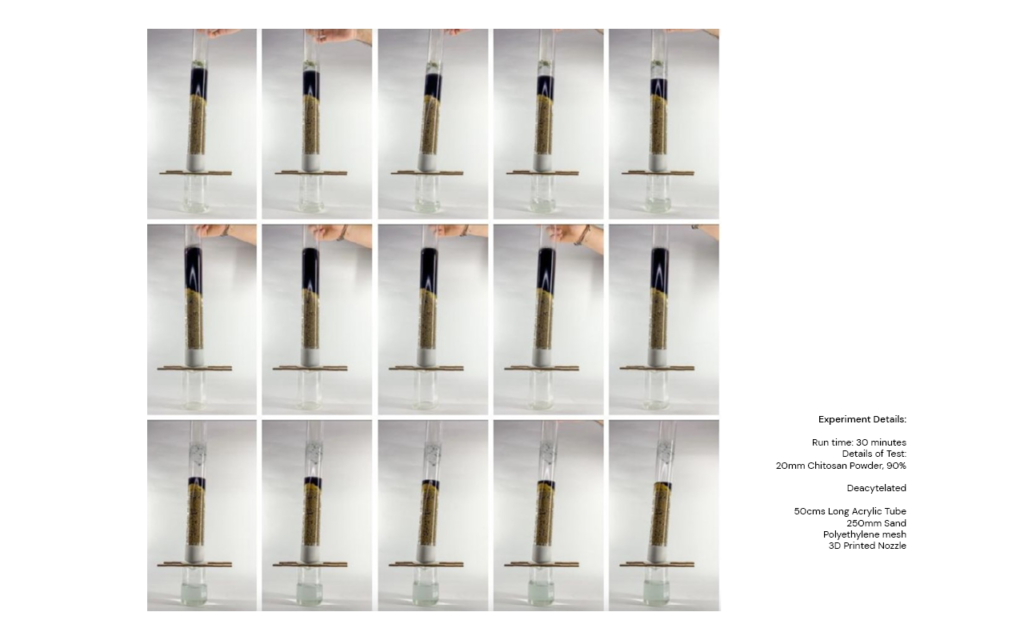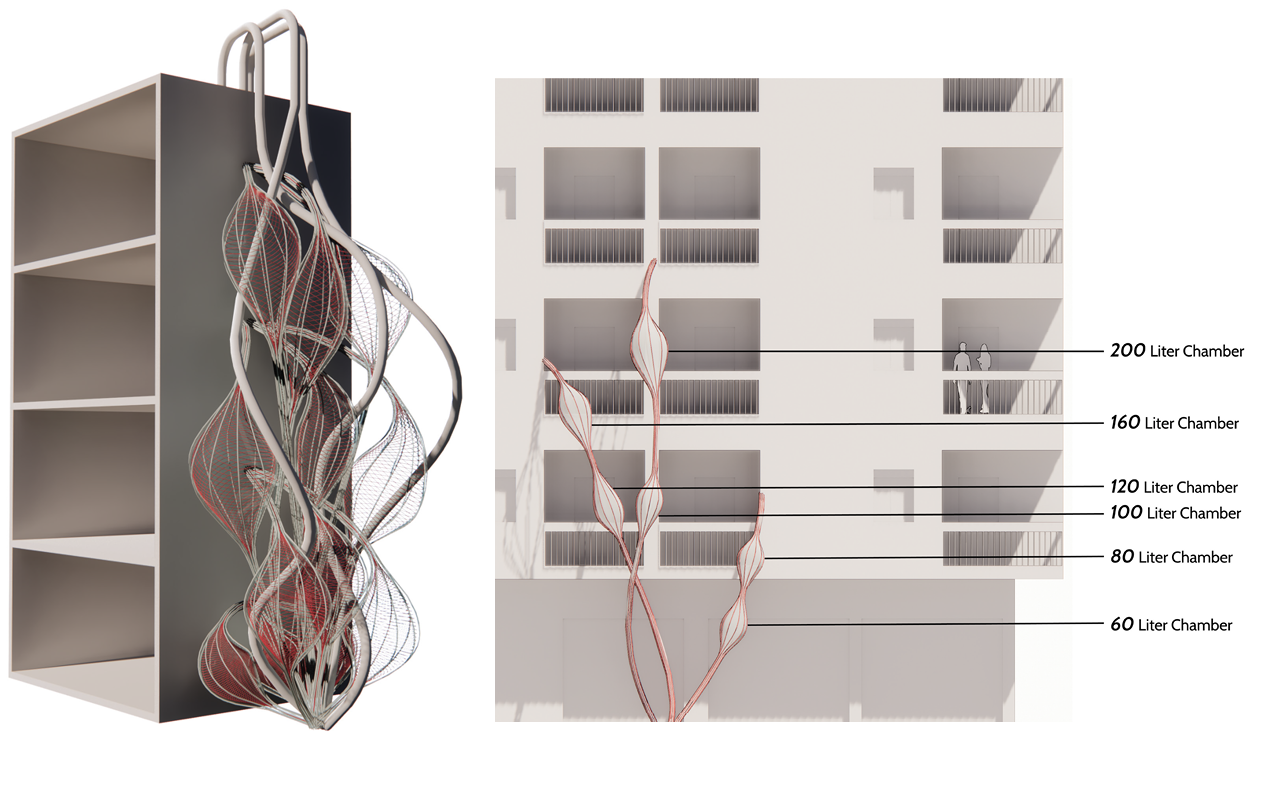|Drip.Drop
Chitosan as the future of water filtration system

|Team
Abhishek Sharma, Ibrahim Kukner, Zackary Bryson
|Faculty
Areti Markopoulou, David Andres Leon, Raimund Krenmueller, Nikol Kirova
|Project year
2021-22
Out of the 70 percent of Earth’s entire water, only 3 percent of that is freshwater. Making up that 3 percent there is less than 0.3 percent of freshwater which is easily accessible to us. In perspective, that 0.3 percent is spread over 195 countries, leaving 2.3 billion people to suffer from a lack of access to clean drinking water (UN). Without action these statistics will only increase by 2050 when global demand for freshwater is expected to be one-third greater than it is now. Finding alternatives to current water filtration methods will be at the forefront of architecture and design for the predicted water-stressed countries. When it comes to localising water filtration in our communities, Drip.Drop occupies a unique space, by using Chitosan, the second-most prevalent biopolymer on the globe, this body of study aims to illustrate the potential of bio-based water treatment solutions. A mechanism to remove pollutants from our effluent water and decrease the impact of the garbage we discharge into our rivers.

Primary objective of the project is to demonstrate the potential of Chitosan, a widely available biopolymer, as a bio-based water treatment solution. The aim is to effectively remove pollutants from wastewater and reduce environmental impact caused by water contamination






The material system efficiently removes impurities and pollutants, showing potential for widespread application in both industrial and community-level water treatment processes. The optimized Chitosan concentration ensures maximum efficacy, and the system’s ability to rapidly filter water suggests scalability and efficiency. Additionally, the potential for reusing both Chitosan and separated dyes underscores its economic viability and sustainability.
The Glass Fibre Reinforced Rods (GFR Rods) facilitated the creation of chambers for the filtration process due to their structural properties. By conducting bending analyses, the required curvatures were determined to accommodate the necessary volumes. Rings were utilized to bind the rods together, employing compression to create outward bends and form voids within the structure. Understanding water consumption variations in buildings is vital for tailoring the design of this system. It is essential to comprehend the water flow within a building to ascertain the necessary volume for housing and filtering grey water. Depending on the occupants’ number and appliance usage, suitable filtration adjustments can be identified.

Differentiating the roles within an urban context, the chamber system operates at a residential scale, ideal for low-rise buildings in cities like Barcelona. This system filters water for direct use within the building and municipal supply, catering to parks and gardens. Meanwhile, the tower, explained in subsequent sections, functions as a larger-scale filtration system for the entire neighborhood. With a higher filtration capacity, it processes water from municipal waterways and surrounding commercial/industrial units. The tower redistributes this filtered water back to the city, serving as a filtration device in public areas and a symbol for water conservation awareness and education.





The ongoing Drip.Drop initiative targets global freshwater accessibility issues by exploring natural filtration techniques. Focused on chitosan, a widely available biopolymer, this project innovates water filtration systems for residential and community use. Leveraging chitosan’s exceptional pollutant absorption, it aims to treat industrial waste and household grey water, rethinking urban water treatment approaches. Drip.Drop seeks to transform city infrastructures, making them more adaptable and efficient, particularly in water-stressed areas. With continual experimentation and research building on existing chitosan studies, this initiative strives to revolutionize water management practices, acknowledging the invaluable contributions of previous researchers in this field.

